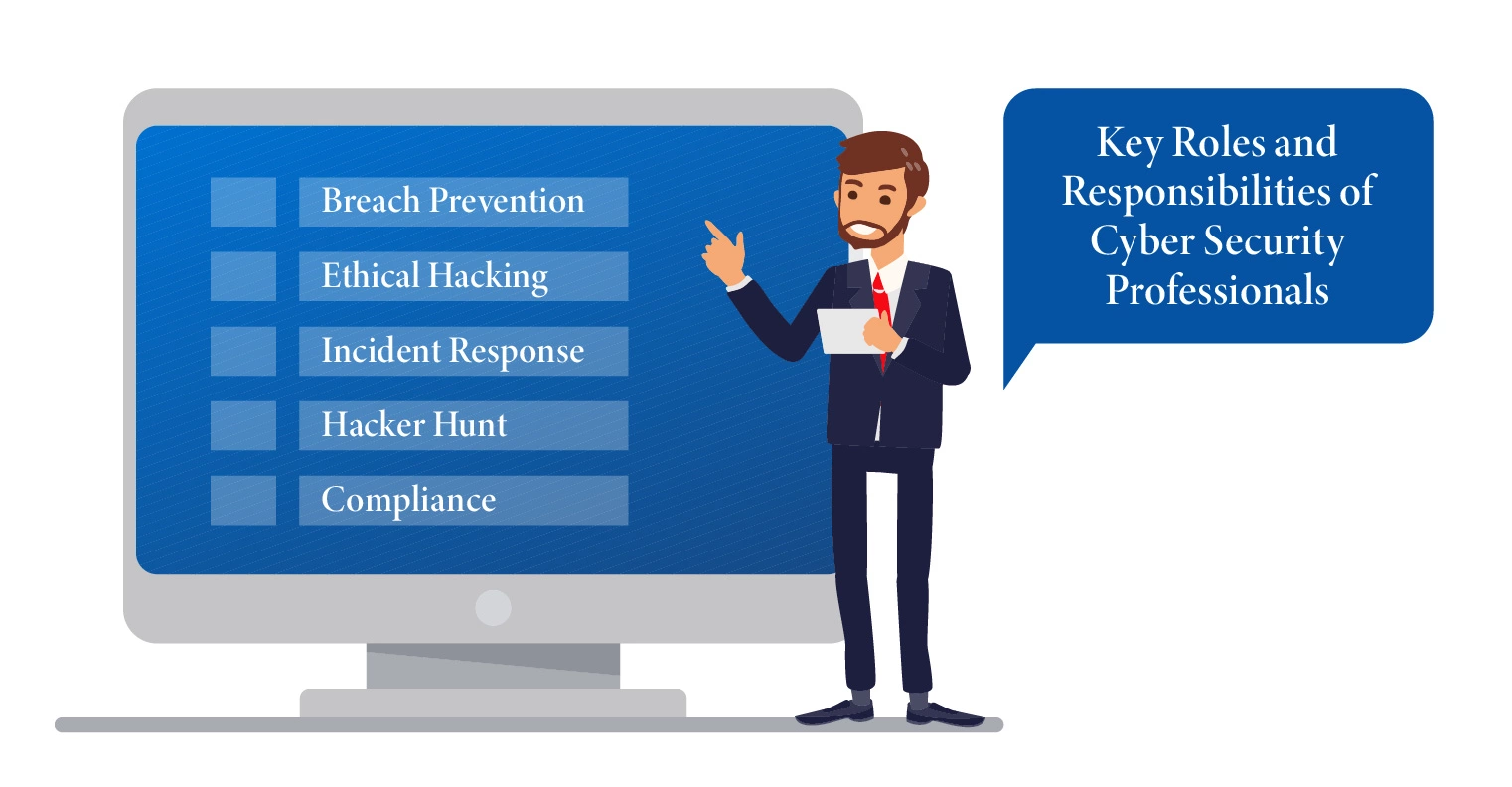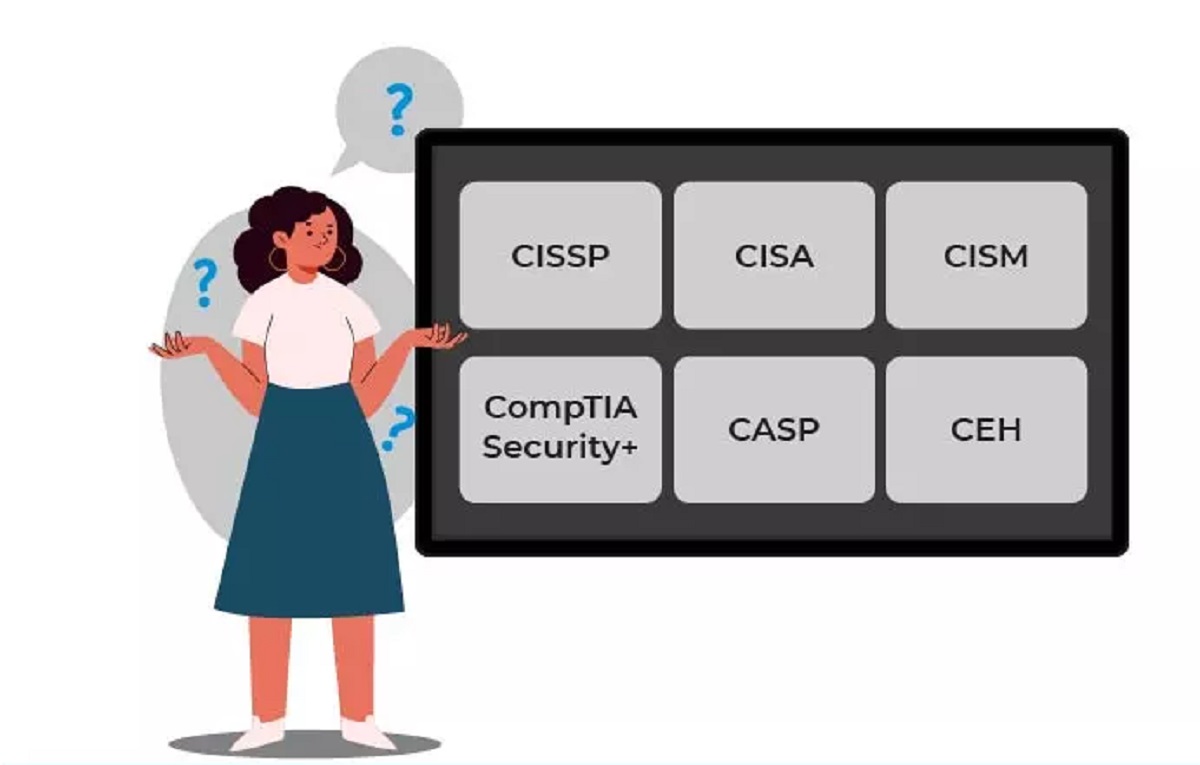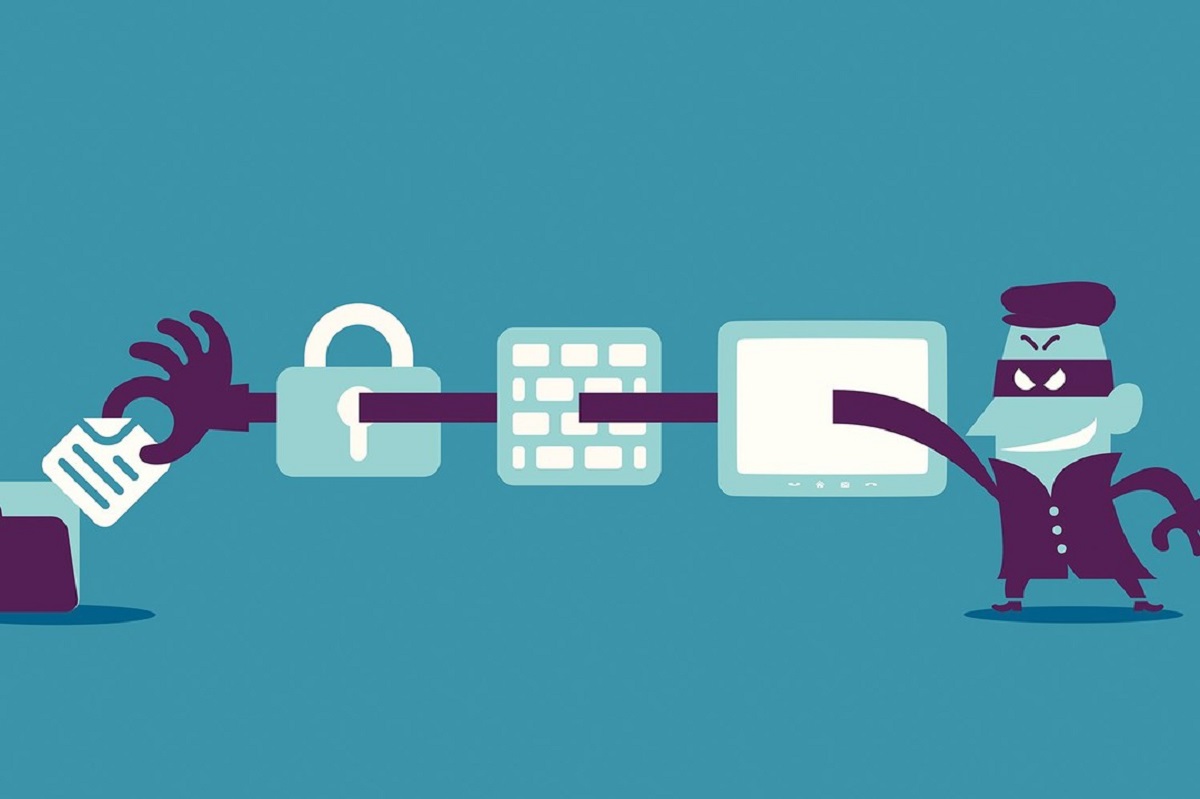Introduction
Welcome to the world of cybersecurity, where the protection of digital information is crucial in today’s interconnected society. With the increasing threats and vulnerabilities in cyberspace, the demand for cybersecurity professionals is soaring. If you are passionate about safeguarding data and preventing cyberattacks, then obtaining cybersecurity training is essential.
Cybersecurity training equips individuals with the knowledge and skills needed to protect sensitive information, detect and respond to threats, and ensure the overall security of digital systems. It is a dynamic field that requires constant learning and adaptation to stay ahead of cybercriminals.
While many formal training programs and certifications are available, they can be costly and may require a significant time commitment. However, there is good news for aspiring cybersecurity professionals: you can access high-quality cybersecurity training for free.
Free cybersecurity training offers a fantastic opportunity to learn the fundamentals of cybersecurity, explore various topics, and develop essential skills at no cost. Whether you are a beginner looking to start a career in cybersecurity or a seasoned professional seeking to expand your knowledge, these free resources can provide the foundation and practical experience you need to succeed.
In this article, we will explore the benefits of free cybersecurity training and guide you on how to identify reliable and trustworthy sources for your learning journey. We will also highlight some of the top websites and platforms that offer free cybersecurity training, as well as provide insights into the available learning resources and tools.
Moreover, we will discuss the importance of networking and community building within the cybersecurity industry and how you can make the most out of free cybersecurity training. So, if you are intrigued by the world of cybersecurity and eager to enhance your skills, join us on this exploration of free cybersecurity training options.
Understanding the Importance of Cybersecurity Training
In today’s digital age, cybersecurity has become a critical concern for individuals, businesses, and governments alike. With the rise in cyber threats and attacks, it has become imperative to prioritize the protection of sensitive information and secure digital infrastructures. This is where cybersecurity training plays a pivotal role.
Cybersecurity training helps individuals develop the knowledge and skills necessary to defend against various cyber threats, such as hacking, malware, phishing, and data breaches. It equips them with the tools and techniques needed to identify vulnerabilities, implement security measures, and mitigate risks effectively.
One of the primary reasons cybersecurity training is essential is the increasing sophistication of cybercriminals. As technology advances, cybercriminals continuously devise new methods to exploit vulnerabilities and gain unauthorized access to systems. Therefore, individuals need to stay updated with the latest cybersecurity practices through training to match the evolving threat landscape.
Furthermore, cybersecurity training enhances the overall security posture of organizations. By training employees on best practices and security protocols, companies can strengthen their defense against cyber threats. This not only protects sensitive data but also prevents potential financial losses and reputational damage that can occur as a result of a successful cyberattack.
Individuals who undergo cybersecurity training also gain a competitive edge in the job market. As the demand for cybersecurity professionals continues to rise, employers are seeking candidates with the right skills and qualifications to protect their digital assets. By acquiring cybersecurity training, individuals can demonstrate their competency and dedication to the field, thereby increasing their employability and career prospects.
Moreover, cybersecurity training fosters a culture of security awareness and responsible digital behavior. By educating individuals about the threats they may encounter online and teaching them how to protect themselves, cybersecurity training empowers individuals to become responsible digital citizens and contribute to a safer online environment.
Ultimately, cybersecurity training is crucial for safeguarding digital infrastructure, protecting sensitive information, and staying ahead of ever-evolving cyber threats. It not only benefits individuals by enhancing their skills and employability but also serves as a vital defense mechanism for organizations and society as a whole.
Why Should You Consider Free Cybersecurity Training
When it comes to pursuing cybersecurity training, many individuals may question why they should consider free options when there are paid programs available. However, free cybersecurity training offers several advantages that make it worth considering.
First and foremost, the cost factor is a significant advantage of free cybersecurity training. Formal training programs and certifications can be expensive, often requiring a substantial investment. By opting for free training, individuals can access high-quality learning resources without having to worry about the financial burden.
Free cybersecurity training also provides flexibility in terms of accessibility. Many free training resources are available online, allowing individuals to learn at their own pace and from the comfort of their homes. This flexibility is especially beneficial for those who are working or have other commitments, as they can fit their cybersecurity training into their busy schedules.
Additionally, free cybersecurity training offers a diverse range of topics and learning materials. This allows individuals to explore different aspects of cybersecurity and tailor their learning experience according to their interests and goals. Whether someone wants to dive deep into network security, cryptography, or ethical hacking, they can find free resources that cater to their specific needs.
Another advantage of free cybersecurity training is the practical experience it provides. Many free training platforms and websites offer hands-on labs, simulations, and real-life scenarios that allow learners to apply their knowledge in a practical setting. This experiential learning enables individuals to develop practical skills that are essential in the field of cybersecurity.
Furthermore, free cybersecurity training often provides access to a supportive and vibrant community. Online forums, discussion boards, and communities of learners can offer valuable insights, mentorship, and collaboration opportunities. Engaging with this community can enhance the learning experience and foster professional connections within the cybersecurity industry.
Lastly, free cybersecurity training helps individuals gauge their interest and aptitude for the field without making a financial commitment. It serves as a stepping stone for those who are considering a career in cybersecurity, allowing them to explore the field and assess if it aligns with their passion and skills.
Overall, free cybersecurity training offers numerous benefits, including cost-effectiveness, flexibility, diverse learning materials, practical experience, networking opportunities, and the ability to gauge one’s interest in the field. Whether you are a beginner looking to start a career in cybersecurity or a professional seeking to expand your knowledge, free cybersecurity training is a valuable resource worth considering.
How to Identify Reliable and Trustworthy Sources for Free Cybersecurity Training
With the abundance of free cybersecurity training options available online, it is important to identify reliable and trustworthy sources that offer high-quality content. Here are some key factors to consider when evaluating free cybersecurity training sources:
1. Reputation and Credibility: Research the reputation and credibility of the training provider. Look for organizations, universities, and institutions that are well-known in the cybersecurity industry. Check for reviews, testimonials, and endorsements from trusted sources.
2. Expertise and Qualifications: Determine the expertise and qualifications of the instructors or trainers. Look for individuals who have relevant industry experience, certifications, or academic qualifications in cybersecurity.
3. Updated Content: Cybersecurity is a rapidly evolving field, so it is crucial to ensure that the training content is up to date. Look for sources that regularly update their materials to reflect the latest trends, technologies, and best practices in cybersecurity.
4. Comprehensive Curriculum: Evaluate the curriculum or course content to ensure it covers all the essential aspects of cybersecurity. Look for courses that encompass topics such as threat analysis, network security, cryptography, ethical hacking, incident response, and compliance.
5. Hands-on Learning Opportunities: Practical experience is crucial in cybersecurity. Look for training sources that offer hands-on labs, simulations, or real-world scenarios where learners can apply their knowledge in a practical setting.
6. Peer Recommendations: Seek recommendations from peers or professionals in the cybersecurity industry. Engage with online forums, communities, and social media groups to get insights on the most reputable and trusted sources for free cybersecurity training.
7. Accreditation and Certifications: Check if the training source is recognized or accredited by relevant industry organizations or certifications bodies. This adds credibility to the training and ensures that it meets certain standards of quality.
8. User Reviews and Feedback: Read user reviews and feedback about the training source. Look for platforms that provide transparent reviews and ratings from learners who have previously completed the training.
9. Support and Resources: Evaluate the availability of support and additional resources provided by the training source. Look for platforms that offer forums, FAQs, or dedicated support channels to address learner queries and provide additional learning materials.
10. Scalability and Course Progression: Consider the scalability and course progression options offered by the training source. Look for platforms that offer a range of courses, from beginner to advanced levels, allowing learners to progress and deepen their knowledge as they go.
By considering these factors, individuals can identify reliable and trustworthy sources for free cybersecurity training. Taking the time to choose the right training source ensures a valuable and enriching learning experience in the dynamic field of cybersecurity.
Top Websites and Platforms Offering Free Cybersecurity Training
When it comes to free cybersecurity training, there are several reputable websites and platforms that provide excellent resources for learners. Here are some of the top sources to consider:
1. Cybrary: Cybrary offers a wide range of free cybersecurity courses, including topics such as ethical hacking, network security, incident response, and more. Their courses are developed by industry experts and provide hands-on learning opportunities.
2. Open Security Training: Open Security Training is a community-driven platform that provides free access to a vast repository of cybersecurity training materials. Their content includes lectures, videos, and labs covering various topics like binary analysis, malware analysis, and web application security.
3. Coursera: Coursera offers both paid and free courses from top universities and institutions. Their cybersecurity courses cover a wide range of topics, including cryptography, computer forensics, and cybersecurity risk management. Learners have the option to audit the courses for free, accessing all the materials except for the graded assignments and certifications.
4. edX: edX is an online learning platform that offers a range of cybersecurity courses from renowned universities and institutions. Learners can access course materials for free, although a fee may be required for obtaining certificates. Topics covered include network security, secure coding, and cybersecurity fundamentals.
5. CISA Cybersecurity Awareness Training: The Cybersecurity and Infrastructure Security Agency (CISA) of the United States government provides free cybersecurity awareness training for individuals, organizations, and employees. These training modules cover topics such as phishing, social engineering, and mobile device security.
6. Google IT Security Training: Google offers a series of online IT security training courses that cover various aspects of cybersecurity, including network security, encryption, and incident response. These courses are self-paced and provide hands-on labs for practical experience.
7. SecurityTube: SecurityTube is a popular platform for learning cybersecurity through video tutorials and webinars. They offer a wide range of topics, including wireless network security, penetration testing, and reverse engineering.
8. SANS Security Awareness: SANS offers free security awareness training materials that focus on educating individuals about common cyber threats and best practices for preventing attacks. These materials can be used by organizations to train their employees on cybersecurity awareness.
9. OWASP: OWASP (Open Web Application Security Project) is a community-driven organization that provides free resources and training on web application security. They offer documentation, articles, and hands-on projects to help individuals understand and mitigate web application vulnerabilities.
10. National Initiative for Cybersecurity Careers and Studies (NICCS): NICCS is a U.S. government initiative that provides free cybersecurity training resources and courses. They offer a comprehensive list of training opportunities, including webinars, online courses, and self-paced learning materials.
These websites and platforms offer valuable resources for individuals looking to enhance their cybersecurity skills. Whether you are a beginner or a seasoned professional, exploring these free training options can provide you with the knowledge and practical experience necessary to excel in the field of cybersecurity.
Learning Resources and Tools for Free Cybersecurity Training
When it comes to free cybersecurity training, there is an abundance of learning resources and tools available to learners. These resources provide valuable information and practical exercises to help individuals develop their cybersecurity skills. Here are some of the top learning resources and tools for free cybersecurity training:
1. Online Documentation and Guides: Many cybersecurity organizations and communities provide comprehensive online documentation and guides that cover various topics such as network security, secure coding, and incident response. Examples include the NIST Special Publications and the OWASP documentation.
2. Capture The Flag (CTF) Challenges: CTF challenges are interactive exercises that simulate real-world scenarios and allow learners to practice their cybersecurity skills in a fun and engaging way. Platforms like Hack The Box, TryHackMe, and VulnHub offer a range of CTF challenges for free.
3. Virtual Labs and Simulations: Virtual labs and simulations provide a safe environment for learners to practice their cybersecurity skills without impacting real systems. Platforms like CyberRange and Security Onion offer virtual lab environments and simulations for hands-on learning.
4. Open Source Tools: There are many open source tools available that can be used for learning and practicing cybersecurity concepts. Tools like Wireshark, Metasploit, and Nmap are widely used by cybersecurity professionals and provide valuable insights into network analysis, vulnerability assessment, and penetration testing.
5. Online Tutorials and Video Channels: Internet communities and cybersecurity enthusiasts often create online tutorials and video channels where they share their knowledge and expertise. Platforms like YouTube, Udemy, and Cybrary offer a wealth of free video tutorials on various cybersecurity topics.
6. Podcasts: Podcasts are a great way to stay updated with the latest trends and discussions in the cybersecurity field. Podcasts like “Security Now,” “Darknet Diaries,” and “SANS Internet Storm Center” provide valuable insights and interviews with cybersecurity experts.
7. Webinars and Virtual Conferences: Many organizations and cybersecurity conferences host webinars and virtual conferences where industry experts share their knowledge and insights. These webinars are often recorded and made available for free, allowing learners to access valuable presentations and discussions on a wide range of cybersecurity topics.
8. Online Forums and Communities: Engaging with online forums and communities is an excellent way to connect with like-minded individuals, seek advice, and share knowledge. Platforms like Reddit, StackExchange, and the SANS Internet Storm Center offer active communities of cybersecurity professionals and enthusiasts.
9. Educational Podcasts and Blogs: Several educational podcasts and blogs focus on providing valuable cybersecurity content for learners. Platforms like “CyberWire” and “KrebsOnSecurity” offer insightful discussions, news updates, and analysis of cybersecurity incidents.
10. Educational Games: Educational games provide a gamified approach to learning cybersecurity concepts. Games like “Hacknet” and “Bandit Wargame” offer interactive challenges that require players to apply their cybersecurity knowledge to solve puzzles and complete missions.
These learning resources and tools are readily available and offer a wealth of knowledge and practical experiences for individuals looking to advance their cybersecurity skills. By utilizing these resources and tools, learners can gain hands-on experience, stay updated with the latest industry trends, and continue to enhance their cybersecurity knowledge without any cost.
Networking and Community Building in the Cybersecurity Industry
In the cybersecurity industry, networking and community building play a crucial role in professional development and staying updated with the latest trends and practices. Building relationships, sharing knowledge, and collaborating with peers and industry experts can provide invaluable opportunities for growth. Here’s why networking and community building are essential in the cybersecurity industry:
1. Knowledge Sharing and Learning: Engaging with a network of professionals allows for the exchange of ideas, experiences, and best practices. Through discussions, forums, and community events, individuals can learn from others, gain new insights, and expand their cybersecurity knowledge.
2. Access to Industry Experts: Networking provides the opportunity to connect with industry experts and thought leaders in cybersecurity. These connections can open doors to mentorship, guidance, and invaluable advice for professional growth.
3. Collaboration and Partnership Opportunities: Building a network in the cybersecurity industry can lead to collaboration and partnership opportunities. Working with like-minded individuals or organizations on projects, research, or initiatives can enhance skills, broaden perspectives, and create mutually beneficial outcomes.
4. Career Advancement: Strong professional networks can be instrumental in career advancement. The connections made through networking may lead to job opportunities, referrals, recommendations, or valuable insights into industry trends and job market developments.
5. Industry Insights and Trends: Being part of a cybersecurity network allows individuals to stay updated with the latest industry insights, trends, and emerging technologies. Through community discussions, webinars, conferences, and newsletters, professionals can ensure that their knowledge and skills remain relevant and up to date.
6. Support and Mentoring: Building a network in cybersecurity provides a support system where individuals can seek guidance, advice, and feedback from peers and mentors. This support network can help navigate challenges, share experiences, and provide encouragement during professional growth.
7. Professional Visibility and Reputation: Engaging in networking and community building activities can enhance an individual’s visibility and reputation within the cybersecurity industry. Being recognized as an active participant and contributor in the community can create opportunities for speaking engagements, writing opportunities, or even thought leadership roles.
8. Access to Resources and Opportunities: Networking allows individuals to tap into a wide range of resources and opportunities. This includes access to specialized training programs, funding opportunities, industry events, and job boards that are often shared within professional networks.
9. Industry Advocacy and Influence: Active participation in cybersecurity networks can provide a platform to advocate for important issues, influence policy discussions, and contribute to the overall growth and development of the industry.
10. Long-lasting Personal and Professional Relationships: Networking in the cybersecurity industry often leads to long-lasting personal and professional relationships. These relationships can provide ongoing support, collaboration, and a sense of belonging within the cybersecurity community.
By actively engaging in networking and community building activities, individuals in the cybersecurity industry can position themselves for continuous growth, learning, and professional success. It is through these connections and collaborations that the industry as a whole can thrive and address the evolving cyber threats that we face today.
Making the Most out of Free Cybersecurity Training
Free cybersecurity training provides a valuable opportunity to enhance your skills and knowledge in the field without incurring any cost. To make the most out of this training, consider the following tips:
1. Set Clear Learning Objectives: Before starting your cybersecurity training, set clear learning objectives and goals for yourself. Determine what specific skills or knowledge areas you want to focus on, and tailor your training accordingly.
2. Create a Structured Learning Plan: Develop a structured learning plan that outlines the topics you will cover and the resources you will use. This will help you stay organized, track your progress, and ensure that you cover all the necessary areas of cybersecurity.
3. Engage Actively in the Learning Process: Actively engage in the learning process by participating in discussions, asking questions, and seeking clarification when needed. Take advantage of interactive components and practical exercises to apply your knowledge and gain hands-on experience.
4. Supplement Your Learning with Additional Resources: Complement the free cybersecurity training with additional resources such as books, articles, and research papers. This will provide you with a broader understanding of the topics and help you delve deeper into specific areas of interest.
5. Seek out Networking Opportunities: Participate in cybersecurity forums, online communities, and networking events to connect with other professionals in the field. Engage in discussions, share insights, and build relationships with like-minded individuals who can offer support, guidance, and potential collaboration opportunities.
6. Stay Up to Date with Industry News: Stay informed about the latest trends, emerging threats, and technological advancements in the cybersecurity industry. Subscribe to industry newsletters, follow cybersecurity news websites, and join relevant social media groups to stay updated with current events.
7. Apply Your Knowledge through Practical Projects: Apply your newly acquired knowledge through practical projects and real-life scenarios. Set up a lab environment to practice hands-on skills and experiment with different tools and techniques. This will help solidify your understanding and boost your confidence in applying your knowledge in real-world situations.
8. Continuously Evaluate and Refine Your Skills: Regularly evaluate your progress and identify areas for improvement. Seek out feedback from mentors or experienced professionals in the field. Continuously refine your skills by identifying your strengths and weaknesses and focusing on areas that require further development.
9. Consider Volunteering or Contributing to Open-Source Projects: Look for opportunities to volunteer or contribute to open-source cybersecurity projects. This not only allows you to apply your skills but also helps you gain practical experience and establish a professional reputation within the cybersecurity community.
10. Embrace Lifelong Learning: Cybersecurity is a constantly evolving field, so it is essential to embrace lifelong learning. Stay curious, be open to new ideas, and continue seeking opportunities for professional development even after completing your free cybersecurity training.
By implementing these strategies, you can make the most out of your free cybersecurity training and equip yourself with the skills and knowledge necessary for a successful career in the dynamic field of cybersecurity.
Conclusion
Cybersecurity training is a crucial investment for individuals looking to protect digital information and excel in the cybersecurity industry. While formal training programs can be costly, there are numerous high-quality free resources available that can provide a solid foundation in cybersecurity.
In this article, we discussed the importance of cybersecurity training and why individuals should consider free options. We explored the benefits of free cybersecurity training, including cost-effectiveness, flexibility, diverse learning materials, practical experience, networking opportunities, and the ability to gauge one’s interest in the field.
We also delved into how to identify reliable and trustworthy sources for free cybersecurity training, emphasizing the importance of reputation, expertise, updated content, comprehensive curriculum, and user feedback. Top websites and platforms, such as Cybrary, Coursera, and SANS Security Awareness, were highlighted as excellent sources for free cybersecurity training.
Furthermore, we discussed the abundance of learning resources and tools available for individuals seeking free cybersecurity training. These resources included online documentation and guides, capture the flag challenges, virtual labs and simulations, open-source tools, online tutorials and video channels, podcasts, webinars and virtual conferences, online forums and communities, and educational games.
We emphasized the significance of networking and community building in the cybersecurity industry, highlighting benefits like knowledge sharing, access to industry experts, collaboration opportunities, career advancement, industry insights, support and mentoring, professional visibility, access to resources and opportunities, industry advocacy, and long-lasting relationships.
Finally, we provided tips on how to make the most out of free cybersecurity training, including setting clear learning objectives, creating a structured learning plan, engaging actively, supplementing learning with additional resources, seeking networking opportunities, staying up to date with industry news, applying knowledge through practical projects, continuously evaluating and refining skills, considering volunteering or contributing to open-source projects, and embracing lifelong learning.
By taking advantage of free cybersecurity training opportunities and implementing these strategies, individuals can acquire the necessary skills, knowledge, and connections to thrive in the ever-changing cybersecurity landscape.

























